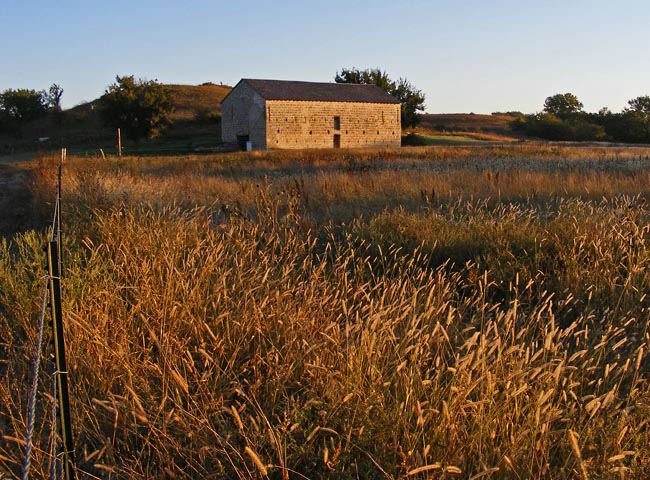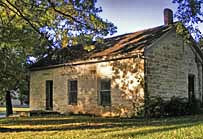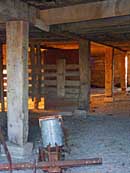|
Scenic USA - Kansas Limestone Bank Barn |

| Photos by Ben Prepelka Ben Prepelka Photography |
First discovered in 1821 by William Becknell, a Missouri trader, the Santa Fe Trail became the primary route for trade with the Spanish in Santa Fe. Known as the father of the Santa Fe Trail, Becknell established the trail as a freight wagon  route, rather than rely solely on pack mules. Along this 773 mile trail, Council Grove served as the only trading post between Independence, Missouri, and Santa Fe, New Mexico. Major George C. Sibley was the first to survey the trail after a treaty was negotiated with the Osage Indians under the famous Council Oak. Once the United States Government obtained the right of way for a public highway, the route naturally took on the name Santa Fe Trail.
route, rather than rely solely on pack mules. Along this 773 mile trail, Council Grove served as the only trading post between Independence, Missouri, and Santa Fe, New Mexico. Major George C. Sibley was the first to survey the trail after a treaty was negotiated with the Osage Indians under the famous Council Oak. Once the United States Government obtained the right of way for a public highway, the route naturally took on the name Santa Fe Trail.
Some of the oldest buildings in Council Grove give a great idea of what travelers encountered on their journey westward through Flint Hills of Kansas. Built by Tom Hill in 1857, the Last Chance Store (inset) was one of the last opportunities for Santa Fe Trail travelers to pick up supplies on their journey to the Southwest. Main Street's Last Chance Store also served as post office facility, government trading house and polling place. Facing hostile lands ahead, Council Grove offered pioneers one last look at civilization, a prepared meal and comfortable bed.
also served as post office facility, government trading house and polling place. Facing hostile lands ahead, Council Grove offered pioneers one last look at civilization, a prepared meal and comfortable bed.
Pictured here is the Limestone Bank Barn built by Seth Hays in 1871. Hays was the first permanent white settler in the Council Grove area, moving into Kansas with his adopted son and freed slave. One of many historic sites, the stone barn, measuring 41 feet wide and 76 feet long, was first built to house livestock. Its massive double oak beams, supporting the roof, were held together by wooden pegs. Sold to Morris County in 1889, some of the first written records of the property are found in county minutes and newspaper articles. Called the Morris Count Poor Farm, the barn fulfilled the county's needs until 1945.
Placed on the National Register of Historic Places in 1990, restoration work to the barn was sponsored by the Fremont Park Revitalization Committee and Heart of the Flint Hills Chapter. Constructed of native limestone, walls, drain pipes and windows were either repaired or replaced over a 15 year period beginning in 1992.
Area Map

|
Additional Area Attractions |
Scenic USA Prints from
|
Copyright © 2020 Benjamin Prepelka
All Rights Reserved

